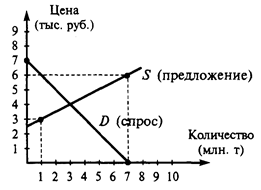UNIT 6 VOLTAGE REGULATOR
AIM OF THE UNIT: - tounderstand the voltage regulator
TASKS 1 Do your best to answer the brainstorming questions. 2 Read the text for general understanding. 3 Make up questions to the text. 4 Find the sentences with the new words in the text. Give the Kazakh or Russian equivalents of the words. 5 Write sentences with the new vocabulary. 6 Make up exercises as in the UNIT 2page 210 (EXERCISES FOR BETTER REMEMBERING THE TOPIC).7 Speak on the topic. Given schemes will help you to remember and understand the topic. 8 Find more information about the topic and make up a project work on the topic.
1 What is the principle of voltage regulation? 2 What is regulator is the carbon-pile device?
A variable resistor in series with the field winding such that variation of the resistor alters the resistance of the field winding; hence the field current and output voltage may be varied. In actual fact the regulation is required to be an automatic function that takes account of load and engine speed. The voltage regulation needs to be in accordance with the standard used to specify aircraft power generation systems, namely MIL-STD- 704D. This standard specifies the voltage at the point of regulation and the nature of the acceptable voltage drops throughout the aircraft distribution, protection and wiring system. DC systems are limited to around 400 A or 12 kW per channel maximum for two reasons: (1) The size of conductors and switchgear to carry the necessary current becomes prohibitive. (2) The brush wear on brushed DC generators becomes excessive with resulting maintenance costs if these levels are exceeded. Another type of electromechanical regulator is the carbon-pile device. This type of regulator is used in generator systems with outputs in excess of 50 A and provides smoother regulation compared with the vibrating contact regulator. Carbon-pile regulators consists of a variable resistance in series with the generator’s shunt wound field coil. The variable resistance is achieved with a stack (or pile) of carbon discs (washers). These are retained by a ceramic rube that keeps the discs aligned. The surface of each disc is relatively rough; applying pressure to the discs creates more surface contact, thereby reducing the resistance of the pile. When pressure is reduced, the reverse process happens, and the resistance through the pile increases. Pressure is applied to the pile by a spring plate. This compression is opposed by the action of an electromagnet connected to the generator output; the strength of the electromagnet’s flux varies in proportion with generatoroutput voltage. Higher generator output increases the current in the electromagnet; this attracts the steel centre of the spring, which reduces compression on the pile, thereby increasing its resistance. Less field current reduces the generator output voltage; the current in the voltage coil reduces electromagnetic effect and the spring compresses the pile, reducing its resistance. The varying force applied by the electromagnet and spring thereby controls the pile’s resistance to control field current and maintains a constant generator output voltage. The regulator is contained within a cylinder (typically three inches in diameter and six inches in length) with cooling fins. Functions of each component are as follows:
erosion of the pile during its life.
The ballast resistor has a low-temperature coefficient and minimizes the effects of temperature on the voltage coil. The trimmer resistors (in series with the ballast resistor) allow the generator output voltage to be trimmed on the aircraft. The boostresistor is normally shorted out; if the switch is opened it allows a slight increase in generator output to meet short-term increases in loading. This is achieved by temporarily reducing the current through the voltage coil. The boost resistor can either be located in the regulator and/or at a remote location for easy access during maintenance.
|



 Compression Screw: the means of setting up compression on the pile and compensating for
Compression Screw: the means of setting up compression on the pile and compensating for


